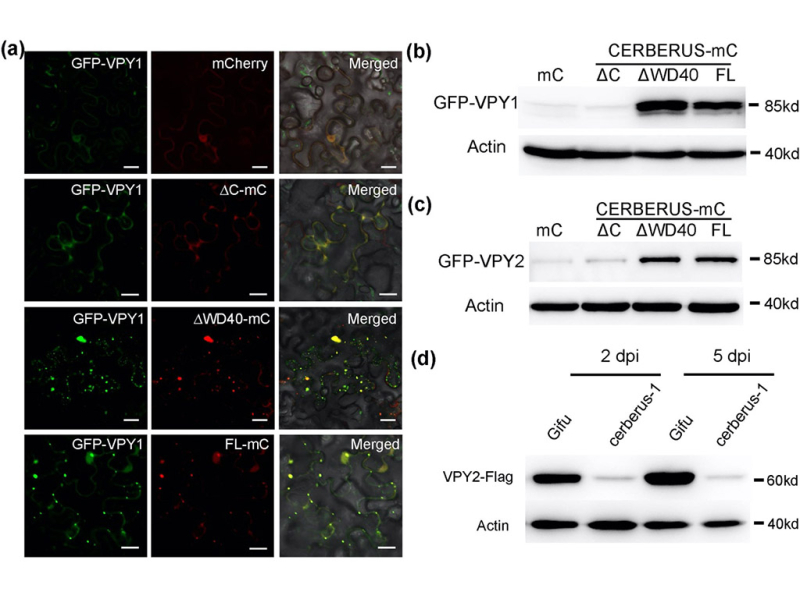A new study reveals the molecular function of CERBERUS during rhizobial infection in Lotus japonicus
It is well known that the CERBERUS gene is essential for infection of legumes by both rhizobia and arbuscular mycorrhizal fungi (AMF). The mutation of this gene prevents plants from forming functional nodule and reduces the infection of AMF significantly (Yano et al., 2009;Takeda et al., 2013). CERBERUS features a U-box domain with predicted ubiquitin ligase activity. However, whether CERBERUS has ubiquitin ligase activity, as well as the biological function of CERBERUS in plant-microbe symbiotic interaction has not been studied.
A research group led by Dr Fang Xie from CAS Center for Excellence in Molecular Plant Sciences now establishes that CERBERUS functions by stabilization of VAPYRIN, another important component required for both root-nodule and arbuscular mycorrhizal symbiosis (Murray et al., 2010; Pumplin et al., 2010).
Xie and her colleagues demonstrate that CERBERUS has auto-ubiquitination activity in vitro, and is localized within distinct motile puncta in L. japonicus root hairs and in Nicotiana benthamiana leaves, and co-localizes with the trans-Golgi network/early endosome markers. Two VAPYRIN orthologs (LjVPY1 and LjVPY2) in L. japonicus were identified and CERBERUS can interact with and co-localize with both LjVPY1 and LjVPY2. They further find that the interaction between CERBERUS and VAPYRINs is mediated by CERBERUS-ARM and can stabilize VAPYRINs. Mutant analysis indicates that LjVPY1 and LjVPY2 are required for rhizobial infection and colonization by AMF. These data suggest that CERBERUS stabilizes LjVPY1 and LjVPY2 within the TGN/EE, where they might function to regulate endocytic trafficking and/or the formation or recycling of signaling complexes during rhizobial and AMF symbiosis.
This work entitled “CERBERUS is critical for stabilization of VAPYRIN during rhizobial infection in Lotus japonicus” has been published online in New phytologist on September 29th. The research was funded by grants from The National Key R&D Program of China and the Chinese Academy of Sciences.

Link to the article: https://doi.org/10.1111/nph.16973
Contact:
Prof. Fang Xie
Tel: 86-21-54924165
Email: ?fxie@cemps.ac.cn?????